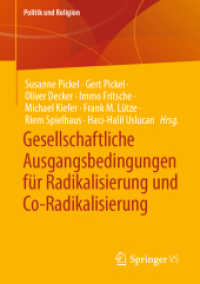Full Description
This volume takes a variety of approaches to the question 'what is a word?', with particular emphasis on where in the grammar wordhood is determined. Chapters in the book all start from the assumption that structures at, above, and below the 'word' are built in the same derivational system: there is no lexicalist grammatical subsystem dedicated to word-building. This type of framework foregrounds the difficulty in defining wordhood. Questions such as whether there are restrictions on the size of structures that distinguish words from phrases, or whether there are combinatory operations that are specific to one or the other, are central to the debate. In this respect, chapters in the volume do not all agree. Some propose wordhood to be limited to entities defined by syntactic heads, while others propose that phrasal structure can be found within words. Some propose that head-movement and adjunction (and Morphological Merger, as its mirror image) are the manner in which words are built, while others propose that phrasal movements are crucial to determining the order of morphemes word-internally. All chapters point to the conclusion that the phonological domains that we call words are read off of the morphosyntactic structure in particular ways. It is the study of this interface, between the syntactic and phonological modules of Universal Grammar, that underpins the discussion in this volume.
Contents
1: Heather Newell, Maire Noonan, Glyne Piggott, and Lisa Travis: Introduction
2: Heather Newell: Nested phase interpretation and the PIC
3: Glyne Piggott and Lisa Travis: Wordhood and word internal domains
4: Bethany Lochbihler: Syntactic domain types and PF effects
5: Neil Myler: Exceptions to the 'Mirror Principle' and Morphophonological 'Action at a distance'
6: Kie Ross Zuraw: Quantitative component interaction: Data from Tagalog nasal substitution
7: Jonathan David Bobaljik and Heidi Harley: Suppletion is local: Evidence from Hiaki
8: Andrés Pablo Salanova: The paradoxes of Mebengokre's analytic causative
9: Thomas Leu: Ein is Ein and that is that: A note on anti-homophony and meta-morphology
10: Máire Noonan: Dutch and German R-pronouns and P-stranding
11: Eric Mathieu, Brandon J. Fry, and Michael Barrie: Adjunction of complex heads inside words: A reply to Piggott and Travis (2013)
12: Tanya Slavin: Verb stem formation and event composition in Oji-Cree
13: Richard Compton: Adjuncts as a diagnostic of polysynthetic word-formation in Inuit








